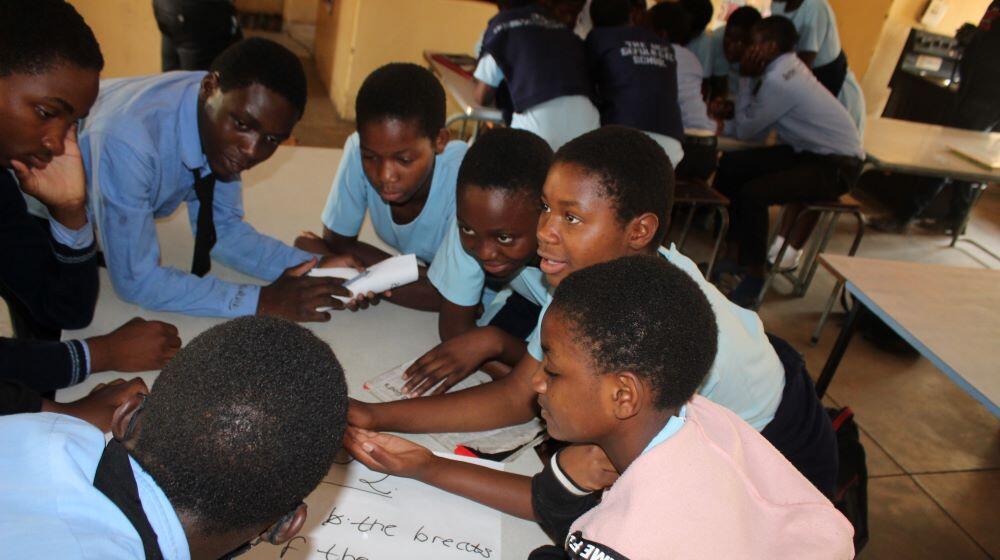Adolescents, especially girls, face significant sexual and reproductive health challenges. In Western Province, like many Provinces across the country, persistent barriers in access to adolescent-friendly health services continue to translate into high teenage pregnancy rates at 42% (the second highest adolescent pregnancy rate in Zambia); as well as high HIV prevalence rate (affecting mainly young people) at 15.4%.
Over the last 7 years, the integration of comprehensive sexuality education (CSE) into the national education curriculum for grades 5 to 12 has played a key role towards improving sexual and reproductive health and rights (SRHR) outcomes among adolescents in Zambia. In 2021, the Government of Zambia made a renewed commitment to implement the East and Southern Africa (ESA) commitment on CSE and sexual reproductive health and rights.
A visit to Sefula Community in Mongu District, Western Province, showcased how creating effective linkages between CSE and adolescent-friendly SRHR services is key towards improved health and development outcomes for young people.
Creating effective linkages between CSE and adolescent-friendly services
With support from UNFPA, Sefula Secondary School has established an effective refereal system with Sefula Health Centre, which contributed to a reduction in incidences of teenage pregnancies, from a headcount of nineteen (19) in 2019 to four (4) in 2021.
An interaction with learners at the school articulated how effective linkages between delivery of CSE in school and access to adolescent-friendly services enables them to make informed choices to lead healthy lives.
Taught under subjects of Biology, Civic Education, Home Economics, Integrated Science and Religious Education, the teachers are able to use interactive and participatory methods to guide learners through discussions, team work and role plays. The lessons cover various thematic areas around adolescent pregnancy, including relationships, values and attitudes, culture, society and human rights, sexual behaviors, and sexual and reproductive health.
Sefula health centre demonstrated the effectiveness of the established referral system, from the class room to adolescent and youth sexual and reproductive health services offered at the centre. For these linkages to be effective, the CSE programmes and ASRH services require sustained enabling environment for behavioural change, which called for startegic engagements at the community and societal levels. At community level, traditional and community leaders often organise dialogues that aim to address social norms and misconceptions that impede effective implementation of CSE programme, as well as provision and access to ASRH services in the community.
"At home, many of us dont get the chance to learn about the important topics of menstruation, pregnancy, love and relationships. Through CSE lessons at our school, we are able to discuss with our teachers alot of issues that concern us, such as puberty, sexual and gender-based violence, values, human rights, health and well-being, and sexual and reproductive health, to mention a few" highlights a learner at Sefula Secondary School.


